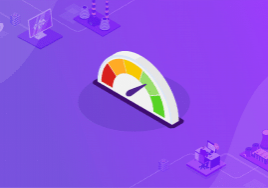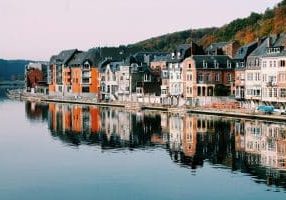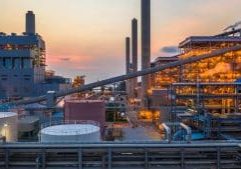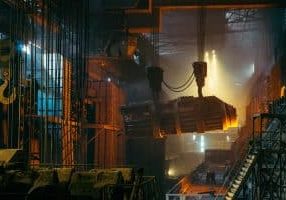The French decree no. 2019-771 of July 23, 2019, is known as the décret tertiaire (or tertiary decree). The decree places strong constraints on companies so that they reduce energy consumption. But beyond the regulatory obligations that need to be met, the decree represents a real opportunity to take on an energy efficiency and optimization strategy. So how can these constraints be transformed into performance levers? And how can digitalization help organizations meet their needs? This article is here to answer these questions.
What is the tertiary decree?

Under article 175, the loi ELAN (ELAN law) on the evolution of housing, development and digital adopted the principle of reducing energy consumption in the tertiary sector. This economic sector accounts for a third of greenhouse gas emissions in the building sector.
The tertiary decree that came into force in October 2019 sets out the terms of application of the legislative measure. More specifically, these obligations concern tertiary buildings with a surface area of more than 1,000 m2. Both tenants and owners are affected in the public and private sectors.
Within this framework, the tertiary decree defines precise energy savings to be achieved. In case of non-compliance with the obligations, those concerned can face a fine. This fine can be up to €7,500 for a legal entity and €1,500 for an individual. Also, if the data is not transmitted to the administration, the name of the company is published on a website in an effort to name and shame.
What are the obligations and conditions?
Reducing your energy consumption: two methods of evaluation
To assess the energy savings achieved, a company can adopt two evaluation methods based on relative or absolute values.
Estimating the reduction in energy consumption using relative values
For this method, the company measures the evolution of its consumption on the basis of a reference year, freely chosen between 2010 and 2019. This can be a calendar year or a period defined over 12 consecutive months.
The final energy consumption of the reference year (Créf) is expressed in kWh/year/m2 of floor area, with an adjustment for climate variations. The final energy consumption to be compared to the reference (Crelat) is also expressed in kWh/year/m2.
The reduction of energy consumption compared to the reference year must in this case reach the targets of 40% by 2030, 50% by 2040 and 60% by 2050.
Estimating the reduction in energy consumption using absolute values
With this method, the objectives are defined in relation to a so-called absolute value set independently of the company, depending on the nature of its activity. This reference (known as Cabs) expresses the final energy level target in kWh/year/m2.
The Cabs is the sum of two types of consumption:
- Energy consumption relative to the general thermal environment and ventilation of the premises (HVAC) defined according to a reference use and the category of activity, then adjusted according to the climatic zone and altitude.
- The specific uses (USE) determined according to a standard use intensity, according to the activity, and the occupation schedule.
The absolute values method is more refined than the relative values method, but it is also more demanding.
To note
It is possible to switch from one method to the other. In this case, the absolute value method is easier to adopt at a later stage, when the company has an optimization plan in place for specific uses.
The different steps to follow to comply with tertiary decree
The energy consumption of your tertiary buildings of more than 1,000 m2 must be declared to ADEME by September 30, 2022.
In order to make this declaration, you must:
- List the real estate assets subject to the requirements of the decree
- Retrieve the consumption history of all sites concerned (from energy suppliers and distributors or from data available internally)
- Determine your reference year over the 2010-2019 period, the objective being to choose the most energy-intensive year to more easily reach the objectives
- Make your declaration to ADEME via the OPERAT platform: the completeness and consistency of the data are checked before a certificate is issued
Thereafter, you will have to establish a monitoring plan to achieve the objectives set by the decree for 2030, 2040 and 2050. Your annual consumption data must be transmitted to ADEME each year.
Transforming the constraints into an opportunity with an EMOS
There are two solutions to help you meet the obligations set by the decree:
- To proceed manually with the sourcing and analysis of the data - with paper documents and Excel tables, the work is tedious and time consuming, and that's without even counting the risks of errors and omissions...
- To equip yourself with a digital energy management solution - you can opt for an EMOS (Energy Management & Optimization System) such as the METRON solution, which allows you to meet the objectives of the decree and to go further in the reduction of your energy consumption.
Benefit #1 - Facilitate your company's compliance with the tertiary decree
For the retrieval of your consumption history
The more complete your data is, the easier it is to choose your reference year. But to retrieve your historical consumption, you may face several difficulties: missing or scattered invoices, different data between suppliers and distributors...
With a digital solution, your consumption history can be easily retrieved thanks to a direct connection with the data of energy distributors (Enedis, GRDF...). All useful files are analyzed and made available to you in a single platform.
For the determination of your reference year
This is a big task! You will have to process your consumption data over a 10-year period, and for each building if you have several. The stakes are high: by making the wrong choice for your reference year, you risk having to make more effort to reach your consumption reduction objectives.
With data processing using AI and the ability to manage multiple sites using one platform, the EMOS solution gives you the assurance to make the best decision.
For the declaration of your energy consumption on OPERAT
This time-consuming task should not be neglected if you want to meet the deadline. It is therefore in your best interest to automate the task via a digital platform so that your teams can devote their time to higher value-added tasks.
Benefit #2 - Identify energy performance levers to achieve savings in your company
In a context where energy prices are rising, going beyond the obligations of the tertiary decree will allow you to limit the impact of additional energy costs on your budget.
As an Energy Management and Optimization solution, METRON helps you meet the requirements of the tertiary sector decree, while allowing you to go further in the follow-up of an energy action plan. Beyond the energy savings achieved, this is an opportunity for you to green your activities. Are you ready to take up the challenge and would you like support in reducing your energy consumption?
Want to learn more about Energy Management & Optimization System (EMOS)?










